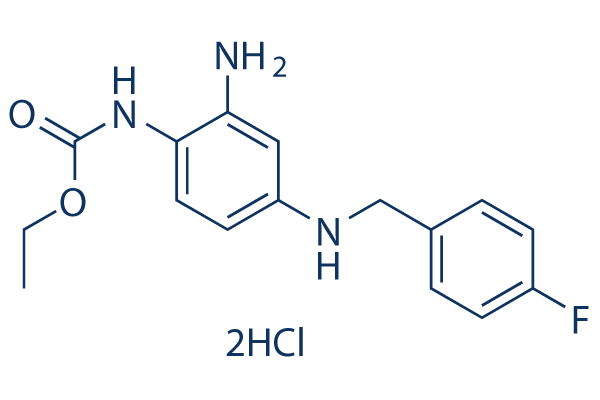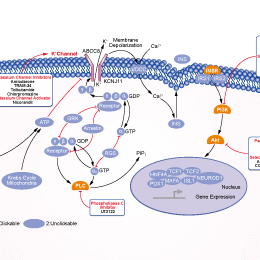
- 阻害剤
- 研究分野別
- PI3K/Akt/mTOR
- Epigenetics
- Methylation
- Immunology & Inflammation
- Protein Tyrosine Kinase
- Angiogenesis
- Apoptosis
- Autophagy
- ER stress & UPR
- JAK/STAT
- MAPK
- Cytoskeletal Signaling
- Cell Cycle
- TGF-beta/Smad
- 化合物ライブラリー
- Popular Compound Libraries
- Customize Library
- Clinical and FDA-approved Related
- Bioactive Compound Libraries
- Inhibitor Related
- Natural Product Related
- Metabolism Related
- Cell Death Related
- By Signaling Pathway
- By Disease
- Anti-infection and Antiviral Related
- Neuronal and Immunology Related
- Fragment and Covalent Related
- FDA-approved Drug Library
- FDA-approved & Passed Phase I Drug Library
- Preclinical/Clinical Compound Library
- Bioactive Compound Library-I
- Bioactive Compound Library-II
- Kinase Inhibitor Library
- Express-Pick Library
- Natural Product Library
- Human Endogenous Metabolite Compound Library
- Alkaloid Compound LibraryNew
- Angiogenesis Related compound Library
- Anti-Aging Compound Library
- Anti-alzheimer Disease Compound Library
- Antibiotics compound Library
- Anti-cancer Compound Library
- Anti-cancer Compound Library-Ⅱ
- Anti-cancer Metabolism Compound Library
- Anti-Cardiovascular Disease Compound Library
- Anti-diabetic Compound Library
- Anti-infection Compound Library
- Antioxidant Compound Library
- Anti-parasitic Compound Library
- Antiviral Compound Library
- Apoptosis Compound Library
- Autophagy Compound Library
- Calcium Channel Blocker LibraryNew
- Cambridge Cancer Compound Library
- Carbohydrate Metabolism Compound LibraryNew
- Cell Cycle compound library
- CNS-Penetrant Compound Library
- Covalent Inhibitor Library
- Cytokine Inhibitor LibraryNew
- Cytoskeletal Signaling Pathway Compound Library
- DNA Damage/DNA Repair compound Library
- Drug-like Compound Library
- Endoplasmic Reticulum Stress Compound Library
- Epigenetics Compound Library
- Exosome Secretion Related Compound LibraryNew
- FDA-approved Anticancer Drug LibraryNew
- Ferroptosis Compound Library
- Flavonoid Compound Library
- Fragment Library
- Glutamine Metabolism Compound Library
- Glycolysis Compound Library
- GPCR Compound Library
- Gut Microbial Metabolite Library
- HIF-1 Signaling Pathway Compound Library
- Highly Selective Inhibitor Library
- Histone modification compound library
- HTS Library for Drug Discovery
- Human Hormone Related Compound LibraryNew
- Human Transcription Factor Compound LibraryNew
- Immunology/Inflammation Compound Library
- Inhibitor Library
- Ion Channel Ligand Library
- JAK/STAT compound library
- Lipid Metabolism Compound LibraryNew
- Macrocyclic Compound Library
- MAPK Inhibitor Library
- Medicine Food Homology Compound Library
- Metabolism Compound Library
- Methylation Compound Library
- Mouse Metabolite Compound LibraryNew
- Natural Organic Compound Library
- Neuronal Signaling Compound Library
- NF-κB Signaling Compound Library
- Nucleoside Analogue Library
- Obesity Compound Library
- Oxidative Stress Compound LibraryNew
- Phenotypic Screening Library
- PI3K/Akt Inhibitor Library
- Protease Inhibitor Library
- Protein-protein Interaction Inhibitor Library
- Pyroptosis Compound Library
- Small Molecule Immuno-Oncology Compound Library
- Mitochondria-Targeted Compound LibraryNew
- Stem Cell Differentiation Compound LibraryNew
- Stem Cell Signaling Compound Library
- Natural Phenol Compound LibraryNew
- Natural Terpenoid Compound LibraryNew
- TGF-beta/Smad compound library
- Traditional Chinese Medicine Library
- Tyrosine Kinase Inhibitor Library
- Ubiquitination Compound Library
-
Cherry Picking
You can personalize your library with chemicals from within Selleck's inventory. Build the right library for your research endeavors by choosing from compounds in all of our available libraries.
Please contact us at info@selleck.co.jp to customize your library.
You could select:
- 抗体
- 新製品
- お問い合わせ
Retigabine 2HCl
別名:N-(2-amino-4-[fluorobenzylamino]-phenyl) carbamic acid (2HCl), D-23129 2HCl
Retigabine 2HCl (D-23129) is a novel anticonvulsant with activity in a broad range of seizure models. The mechanism of action involves opening of neuronal K(V)7.2-7.5 (formerly KCNQ2-5) voltage-activated K(+) channels.

CAS No. 150812-13-8
文献中Selleckの製品使用例(5)
製品安全説明書
Retigabine 2HCl関連製品
シグナル伝達経路
Potassium Channel阻害剤の選択性比較
生物活性
| 製品説明 | Retigabine 2HCl (D-23129) is a novel anticonvulsant with activity in a broad range of seizure models. The mechanism of action involves opening of neuronal K(V)7.2-7.5 (formerly KCNQ2-5) voltage-activated K(+) channels. | ||||||
|---|---|---|---|---|---|---|---|
| Targets |
|
| In Vitro | ||||
| In vitro | Retigabine is a novel antiepileptic drug whose mechanism of action involves potassium channel opening activity in neuronal cells. Retigabine can markedly enhance KCNQ2/Q3 currents. In addition, retigabine also enhances slow channel deactivation. Retigabine has been shown to increase the synthesis of GABA in rat hippocampal slices and to enhance GABA-induced chloride currents in cultured rat cortical neurons. Retigabine has been shown to induce membrane hyperpolarization in neurones in rat hippocampal-entorhinal cortex slices and to exert potassium channel opening activity in neuronal cells. Retigabine enhances a linopirdine-sensitive current in differentiated PC12 cells[1]. concentrations of RTG/EZG ≥10 μM are required to cause significant augmentation of the GABAA receptor response. The potency of RTG/EZG differs somewhat depending on the GABAA receptor subunit combination, with the following rank order: α1β3γ2=α1β2γ2 >α3β2γ2=α2β2γ2>α5β2γ2=α1β2(N265S)γ2=α1β1γ2. RTG/EZG exhibits only weak inhibitory effects at voltage-gated Nav and Cav channel currents at predominantly supratherapeutic concentrations. RTG/EZG does not interact significantly with glutamate receptors[2]. | |||
|---|---|---|---|---|
| 細胞実験 | 細胞株 | HEK293 cells | ||
| 濃度 | 0.1, 0.3, 1 or 3 μM | |||
| 反応時間 | 4 h | |||
| 実験の流れ | The retigabine incubation experiments are performed on HEK293 cells transfected with 10 ng KV2.1 over 48 h. 24 h post-transfection, HEK293 cells are either exposed to normal medium (control) containing 0.1% DMSO (vehicle control) or 0.1, 0.3, 1 or 3 μM retigabine for 4 h. After the 4 h exposure, the incubation medium is removed and fresh medium is added to the transfected HEK293 cells. Thus, at the moment of electrophysiological analysis (48 h post-transfection), no retigabine is present in the recording solution. |
|||
| In Vivo | ||
| In Vivo | Retigabine enhances γ-aminobutyric acid (GABA)-ergic transmission in the central nervous system[1]. Retigabine is rapidly absorbed and distributed with an oral bioavailability of 60% and a high volume of distribution of approximately 6.2 L/kg. Tolerability is good in humans when titrated up to its therapeutic dose range (600-1200 mg/day). Plasma protein binding of the drug is approximately 80%. The relatively high systemic bioavailability after oral administration suggests that retigabine is resistant to first-pass metabolism, a finding confirmed in multiple species. Retigabine is metabolized exclusively via phase II hepatic glucuronidation and acetylation. Gender differences in exposure have been noted, with female subjects exhibiting higher plasma concentrations of the drug after oral administration than male subjects. Excretion of retigabine appears to be predominantly renal. Depending on the behavioral endpoints analyzed, it appears that retigabine has a relatively poor therapeutic index (ratio between TD50 obtained in rotarod and ED50 obtained in maximal electroshock where maximal tonic extension of the hindlimbs was used as endpoint) in both mice (TD50/ED50 = 2.2) and rats (TD50/ED50 = 1.9) after i.p. administration. However, after p.o. administration in rats retigabine shows a therapeutic index of 28.8, which compares favorably with that reported for other antiepileptics, such as carbamazepine[4]. | |
|---|---|---|
| 動物実験 | 動物モデル | DBA/2 mice |
| 投与量 | 0.5-20 mg/kg | |
| 投与経路 | i.p. | |
|
化学情報
| 分子量 | 376.25 | 化学式 | C16H18FN3O2.2HCl |
| CAS No. | 150812-13-8 | SDF | Download Retigabine 2HCl SDFをダウンロードする |
| Smiles | CCOC(=O)NC1=C(C=C(C=C1)NCC2=CC=C(C=C2)F)N.Cl.Cl | ||
| 保管 | |||
|
In vitro |
DMSO : 75 mg/mL ( (199.33 mM); 吸湿したDMSOは溶解度を減少させます。新しいDMSOをご使用ください。) Water : 75 mg/mL Ethanol : 25 mg/mL |
モル濃度計算器 |
|
in vivo Add solvents to the product individually and in order. |
投与溶液組成計算機 | |||||
実験計算
投与溶液組成計算機(クリア溶液)
ステップ1:実験データを入力してください。(実験操作によるロスを考慮し、動物数を1匹分多くして計算・調製することを推奨します)
mg/kg
g
μL
匹
ステップ2:投与溶媒の組成を入力してください。(ロット毎に適した溶解組成が異なる場合があります。詳細については弊社までお問い合わせください)
% DMSO
%
% Tween 80
% ddH2O
%DMSO
%
計算結果:
投与溶媒濃度: mg/ml;
DMSOストック溶液調製方法: mg 試薬を μL DMSOに溶解する(濃度 mg/mL, 注:濃度が当該ロットのDMSO溶解度を超える場合はご連絡ください。 )
投与溶媒調製方法:Take μL DMSOストック溶液に μL PEG300,を加え、完全溶解後μL Tween 80,を加えて完全溶解させた後 μL ddH2O,を加え完全に溶解させます。
投与溶媒調製方法:μL DMSOストック溶液に μL Corn oil,を加え、完全溶解。
注意:1.ストック溶液に沈殿、混濁などがないことをご確認ください;
2.順番通りに溶剤を加えてください。次のステップに進む前に溶液に沈殿、混濁などがないことを確認してから加えてください。ボルテックス、ソニケーション、水浴加熱など物理的な方法で溶解を早めることは可能です。
技術サポート
ストックの作り方、阻害剤の保管方法、細胞実験や動物実験の際に注意すべき点など、製品を取扱う時に問い合わせが多かった質問に対しては取扱説明書でお答えしています。
他に質問がある場合は、お気軽にお問い合わせください。
* 必須

